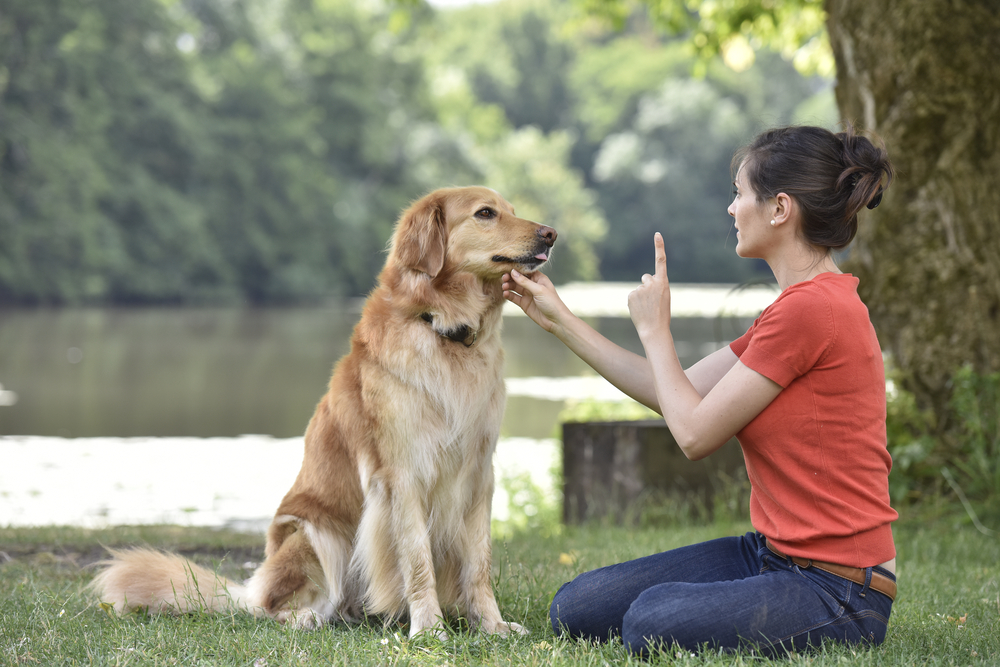Basic Dog Commands
 June 14, 2017
June 14, 2017
Want to know the most important dog training commands?
Pet Training and Boarding investigates why good training is so vital for your canine companion’s safety, well-being and overall happiness.
Dogs flourish under strong, self-confident leaders who enforce clear behavioral expectations. They thrive when their human companions understand and communicate these expectations effectively. Training is crucial, providing a shared language that enhances safety and well-being. It’s not just about teaching tricks like playing dead or walking on a leash; it’s about equipping dogs with the skills to adapt to our human-centric world. Training is both enjoyable and essential, strengthening the bond between you and your dog.
The top basic dog training commands every dog should know are:
Come
Immediately teach your dog to ‘come’ upon arrival at your home. This command is crucial for keeping their attention on you and can be lifesaving. Unfortunately, untrained young dogs often run into dangerous situations like street traffic. After mastering ‘come’ at home, enhance their response in distracting environments during group training sessions. Ensure your dog reliably follows this command in various contexts before allowing them off-lead.
Leave It
This is another important dog training command that is sometimes underestimated for its purpose. Puppies pick this command up very quickly, and it can be reinforced when on-lead. Telling a pup to ‘leave it’ can be useful for multiple situations. From dead birds and rodents to kids’ toys, your new kitten or eating grass. Telling them to ‘leave it’ gives you full control over what they are trying to eat or roll in.
Eat
Teach your dog to eat only on a specific cue word. Start this training in puppyhood. Have your dog sit and wait for your cue before they start eating. Choose a unique cue word that doesn’t rhyme with other commands. This technique reinforces your role as a leader and is also good manners. Incorporating such training into your daily routine ensures consistency and ongoing obedience training.
Wait
Teaching your dog the ‘wait’ command is crucial, especially for large breeds. This command prevents accidents like knocking someone over at the doorway. It’s also important for small dogs to avoid getting stepped on. Use ‘wait’ for various situations like entering or exiting cars, putting on leads and collars, before meals, and at doors. This command enhances safety and control in everyday situations.
Stay
The ‘stay’ command differs from ‘wait’ by requiring the dog to remain in place until you give a release signal. It’s crucial for safety, especially in situations like assisting an injured dog or when you need them to stay put momentarily. Regular practice of ‘stay’ is important, similar to ‘come’. A useful training technique involves asking your dog to ‘stay’ while you throw a ball or Frisbee, then releasing them to fetch it. This helps maintain their obedience to both ‘stay’ and ‘come’ commands.
Five Essential Commands for Your Dog’s Safety and Happiness
Mastering these five dog commands and using them daily, may one day save the life of your dog. In a situation when your dog is running 100km per hour and is not focused on you, the risk of running into oncoming traffic or another dangerous situation can be high. Being able to confidently and consistently recall your dog, ask them to leave it, wait or stay, can uphold the good name of the companion canine while also keeping them safe. A well-trained dog is a happy dog and a happy dog makes a happy human. WOOF!
More content:
Treat free dog training
Training an older dog new tricks




